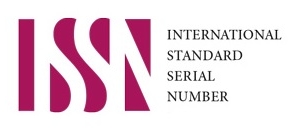Keywords cloud
5. Assessment of risk of toxic damage to people in case of a launch vehicle accident at flight
Page: Kosm. teh. Raket. vooruž. 2024, (1); 40-50
DOI: https://doi.org/10.33136/stma2024.01.040
Language: English
Key words: launch vehicle, critical failure, flight accident, zone of toxic damage to people, zone of dangerous impact of the failed launch vehicle, risk of toxic damage to people.
- Hladkiy E. H. Protsedura otsenky poletnoy bezopasnosti raket-nositeley, ispolzuyuschaya geometricheskoe predstavlenie zony porazheniya obiekta v vide mnogougolnika. Kosmicheskaya technika. Raketnoe vooruzhenie: sb. nauch.-techn. st. Dnepropetrovsk: GP «KB «Yuzhnoye», 2015. Vyp. 3. S. 50 – 56. [Hladkyi E. Procedure for evaluation of flight safety of launch vehicles, which uses geometric representation of object lesion zone in the form of a polygon. Space Technology. Missile Weapons: Digest of Scientific Technical Papers. Dnipro: Yuzhnoye SDO, 2015. Issue 3. Р. 50 – 56. (in Russian)].
- Hladkiy E. H., Perlik V. I. Vybor interval vremeni blokirovki avariynogo vyklucheniya dvigatelya na nachalnom uchastke poleta pervoy stupeni. Kosmicheskaya technika. Raketnoe vooruzhenie: sb. nauch.-tech. st. Dnepropetrovsk: GP «KB «Yuzhnoye», 2011. Vyp. 2. s. 266 – 280. [Hladkyi E., Perlik V. Selection of time interval for blocking of emergency engine cut off in the initial flight leg of first stage. Space Technology. Missile Weapons: Digest of Scientific Technical Papers. Dnipro: Yuzhnoye SDO, 2011. Issue 2. Р. 266 – 280. (in Russian)].
- Hladkiy E. H., Perlik V. I. Matematicheskie modeli otsenki riska dlya nazemnykh obiektov pri puskakh raket-nositeley. Kosmicheskaya technika. Raketnoe vooruzhenie: sb. nauch.-techn. st. Dnepropetrovsk: GP «KB «Yuzhnoye», 2010. Vyp. 2. S. 3 – 19. [Hladkyi E., Perlik V. Mathematic models for evaluation of risk for ground objects during launches of launch-vehicles. Space Technology. Missile Weapons: Digest of Scientific Technical Papers. Dnipro: Yuzhnoye SDO, 2010. Issue 2. P. 3 – 19. (in Russian)].
- NPAOP 0.00-1.66-13. Pravila bezpeki pid chas povodzhennya z vybukhovymy materialamy promyslovogo pryznachennya. Nabrav chynnosti 13.08.2013. 184 s [Safety rules for handling explosive substances for industrial purposes. Consummated 13.08.2013. 184 p.
(in Ukranian)]. - AFSCPMAN 91-710 RangeSafetyUserRequirements. Vol. 1. 2016 [Internet resource]. Link : http://static.e-publishing.af.mil/production/1/afspc/publicating/
afspcman91-710v1/afspcman91-710. V. 1. pdf. - 14 CFR. Chapter III. Commercial space transportation, Federal aviation administration, Department of transportation, Subchapter C – Licensing, part 417 – Launch Safety, 2023 [Internet resource]. Link: http://law.cornell.edu/cfr/text/14/part-417.
- 14 CFR. Chapter III. Commercial space transportation, Federal aviation administration, Department of transportation, Subchapter C – Licensing, part 420 License to Operate a Launch Site. 2022 [Internet resource]. Link: http://law.cornell.edu/cfr/text/14/part-420.
- ISO 14620-1:2018 Space systems – Safety requirements. Part 1: System safety.
- 9 GOST 12.1.005-88. Systema standartov bezopasnosti truda. Obschie sanitarno-gigienicheskie trebovaniya k vozdukhu rabochei zony. [GOST 12.1.005-88. Labor safety standards system. General sanitary and hygienic requirements to air of working zone].
- 10 Rukovodyaschiy material po likvidatsii avarijnykh bolshykh prolivov okislitelya АТ (АК) i goruchego NDMG. L.:GIPKh, 1981, 172 s. [Guidelines on elimination of large spillages of oxidizer NTO and fuel UDMH. L.:GIPH, 1981, 172 p. (in Russian)].
- 11 Kolichestvennaya otsenka riska chimicheskykh avariy. Kolodkin V. M., Murin A. V., Petrov A. K., Gorskiy V. G. Pod red. Kolodkina V. M. Izhevsk: Izdatelskiy dom «Udmurtskiy universitet», 2001. 228 s. [Quantitative risk assessment of accident at chemical plant. Kolodkin V., Murin A., Petrov A., Gorskiy V. Edited by Kolodkin V. Izhevsk: Udmurtsk’s University. Publish house, 2001. 228 p. (in Russian)].
Full text (PDF) || Content 2024 (1)
| Country | City | Downloads |
|---|---|---|
| USA | Ashburn; Mountain View; Buffalo; Buffalo; Las Vegas; San Jose; Chicago; Chicago; Saint Louis; Saint Louis;; New York City; Buffalo; Buffalo; Buffalo; Buffalo; Los Angeles; Chicago; Columbus; Ashburn; Ashburn; Dallas; New Haven; New Haven; Buffalo; Phoenix; Phoenix; Phoenix; Phoenix; Phoenix; Phoenix; Phoenix; Phoenix; Phoenix; Phoenix; Phoenix; Phoenix; Phoenix; Phoenix; Phoenix; Phoenix; Chicago; San Francisco; Los Angeles; San Francisco; El Monte; Seattle; Ashburn; North Charleston; North Charleston; Mountain View; Mountain View; Portland; Portland; Portland; San Mateo; Ashburn; Ashburn; Pompano Beach | 59 |
| China | Pekin; Fuzhou;; Shenzhen; Pekin; Hangzhou | 6 |
| Germany | Falkenstein; Düsseldorf; Falkenstein; Leipzig; Leipzig | 5 |
| Canada | Toronto; Toronto; Toronto; Toronto; Toronto | 5 |
| Singapore | Singapore; Singapore; Singapore; Singapore | 4 |
| The Republic of Korea | Seoul;; Seoul | 3 |
| France | ; Paris | 2 |
| Unknown | ; | 2 |
| Romania | 1 | |
| India | 1 | |
| Netherlands | Amsterdam | 1 |
| Ukraine | Kremenchuk | 1 |
2. How Yuzhnoye develops models for flight safety index evaluation for the case of a rocket failure during the flight
Yangel Yuzhnoye State Design Office, Dnipro, Ukraine
Page: Kosm. teh. Raket. vooruž. 2023 (1); 14-30
DOI: https://doi.org/10.33136/stma2023.01.014
Language: Ukrainian
Key words: launch vehicle, acceptable risk, launch vehicle failure in the flight phase, flight safety system, emergency launch vehicle impact zone, risk of damage to facilities, collection risk
1. Gladkiy E.G. Opredelenie kollektivnogo riska v cluchae avarii rakety-nositelya «Tsiklon-4M» na etape poleta s ispolzovaniem predstavlenniya naselennyh territoriy v vide mnogougolnikov. Kosmichna nauka i tehnologia. K., 2020. T. 26. № 3. S. 32–41. https://doi.org/10.15407/knit2020.03.032
2. Gladkiy E.G. Opredelenie riska dlya obiektov startovogo kompleksa s uchetom ih obvalovki v cluchae avarii rakety-nositelya na nachalnom uchastke poleta. Tehnicheskaya mehanika. Dnepropetrovsk: ITM NAN i GKA Ukrainy, 2020. №1. S. 31–41.
3. Gladkiy E.G. Otsenka riska porazheniya lineynogo obiekta v cluchae avarii rakety-nositelya na etape poleta. Kosmichna nauka i tehnologia. Kiev: GAO, 2019. T. 25. № 4. S. 22–28.
4. Gladkiy E.G. Protsedura otsenki poletnoy bezopasnosti raket-nositeley, ispolzuyuschaya geometricheskoe predstavlenie zony porazheniya obiekta v vide mnogougolnika. Kosmicheskaya tehnika. Raketnoe vooruzhenie: Sb. nauch. tr. Dnepropetrovsk: GPKBU, 2015. Vyp. 3. S. 50–56.
5. Gladkiy E.G., Kryukov A.V. Opredelenie veroyatnosti padenia avariynoy rakety-nositelya na ploschadnye obiekty, raspolozhennye bdol trassy vyvedennia. Kosmicheskaya tehnika. Raketnoe vooruzhenie: Sb. nauch. tr. Dnepropetrovsk: GPKBU, 2008. Vyp. 1. S. 81−90.
6. Gladkiy E.G., Perlik V.I. Vybor interval vremeni blokirovki avriynogo vykluchenniya dvigatelya na nachalnom uchastke poleta pervoy stupeni. Kosmicheskaya tehnika. Raketnoe vooruzhenie: Sb. nauch. tr. Dnepropetrovsk: GPKBU, 2011. Vyp. 2. S. 266–280.
7. Gladkiy E.G., Perlik V.I. Matematicheskie modeli otsenki riska dlya nazemnyh obiektov pri puskah raket-nositeley. Kosmicheskaya tehnika. Raketnoe vooruzhenie: Sb. nauch. tr. Dnepropetrovsk: GPKBU, 2010. Vyp. 2. S. 3–19.
8. Gladkiy E.G., Perlik V.I. Model otsenki urovnya bezopasnosti raketno-kosmicheskyh system. Kosmicheskaya tehnika. Raketnoe vooruzhenie: Sb. nauch. tr. Dnepropetrovsk: GPKBU. 2006. Vyp. 1−2. S. 45–57.
9. Metodika opredeleniya pokazateley bezopasnosti po trassam puskov i v raionah padeniya otdelyauschihsya chastey raket-nositeley. OOO «NTTs «Ekon TsNIImash», 2006.
10. Programma «Grom-2». Operativno-takticheskiy raketniy kompleks. Poletnaya bezopasnost. GR2 YZH ANL 016 00 [Isp. Gladkiy E.G. Zheludkov A.V. i dr.]
11. Programma «Tsiklon-4M». Raketno-kosmicheskiy kompleks. Analiz poletnoy bezopasnosti RKK. C4M YZH ANL 062 00. 2018. Vyp. 1. 92 s. [Isp. Gladkiy E.G., Zheludkov A.V. i dr.].
12. Proekt TKRK Analiz priemlimosti alternativnoy tochki # 7 dlya razmescheniya KPTs ТКРК SL-YN-TD-R-009
13. Razrabotka metodicheskyh materialov po otsenke stepeni riska po trasse poleta i v rayonah padeniya otdelyauschihsya chastey pri puskah sredstv vyvedeniya. Kniga 1. Metodicheskie materialy. NTO. TSNIImash. 1990. 68 s.
14. Raketa kosmicheskogo naznacheniya «Tsiklon-4». Utochnenie characteristic zon padeniya RKN «Tsiklon-4» v cluchae avarii. Otsenka bezopasnosti vybrannyh mest rameschenniya obiktov NK KRK «Tsiklon-4». Tsiklon-4 21.16011.117 OT: Tehn. onchet. Dnepropetrovsk: GP «KB «Yuzhnoye», 2008. 110 s.
15. Raketa kosmicheskogo naznacheniya «Tsiklon-4». Opasnye zony pri avariynom poete RKN «Tsiklon-4». Tsiklon-4 21.16522.635 OT: Tehn. otchet. Dnepropetrovsk: GP «KB «Yuzhnoye», 2009. 69 s.
16. Uvyazka KA Lybid s RKK «Zenit-M»: Poyasnitelnaya zapiska Zenit-M. Lybid PZ, 2012. 363 s.
17. Hanley E., Jim Kumamato J. Nadezhnost tehnicheskyh system i otsenki riska: Pod obsch. red. V. S. Syromyatnikova. M.: Mashinostroenie, 1984. 528 s.
18. Shatrov Ya.T. Issledovanie problem vybora trass puskov i sokrascheniya zon onchuzhdeniya dlya perspektivnyh system vyvedeniya s uchetom faktorov bezopasnosti i ekonomichnosti. Kand. dis., TsNIImash, 1980, 207 s.
19. 14 CFR, Commercial space transportation, Federal aviation administration, Department of transportation Subchapter C – Licensing, part 420 – License to Operate a Launch Site, 2000
20. E. Gladky Mathematical Models of the Safety Assessment of Ground Facilities in Case of Failure of Launch Vehicle Equipped with Onboard Automatic Emergency Engine Shutdown/ Proceedings of the International Astronautical Congress, IAC. 2015. P. 9665 – 9675.
Full text (PDF) || Content 2023 (1)
| Country | City | Downloads |
|---|---|---|
| USA | Ashburn; Ashburn; Ashburn; Columbus; Phoenix; Phoenix; Phoenix; Phoenix; Phoenix; Phoenix; Phoenix; Phoenix; Phoenix; Phoenix; Phoenix; Phoenix; Phoenix; Phoenix; El Monte; El Monte; Seattle; Ashburn; Ashburn; Quinton; North Charleston; Mountain View; San Mateo; Ashburn; Ashburn; Ashburn; Pompano Beach | 31 |
| Singapore | Singapore; Singapore; Singapore; Singapore; Singapore | 5 |
| Canada | Toronto; Toronto; Toronto; Toronto | 4 |
| Unknown | Perth; | 2 |
| Germany | Falkenstein; Falkenstein | 2 |
| Ukraine | Kremenchuk; Kremenchuk | 2 |
| Netherlands | Amsterdam | 1 |


